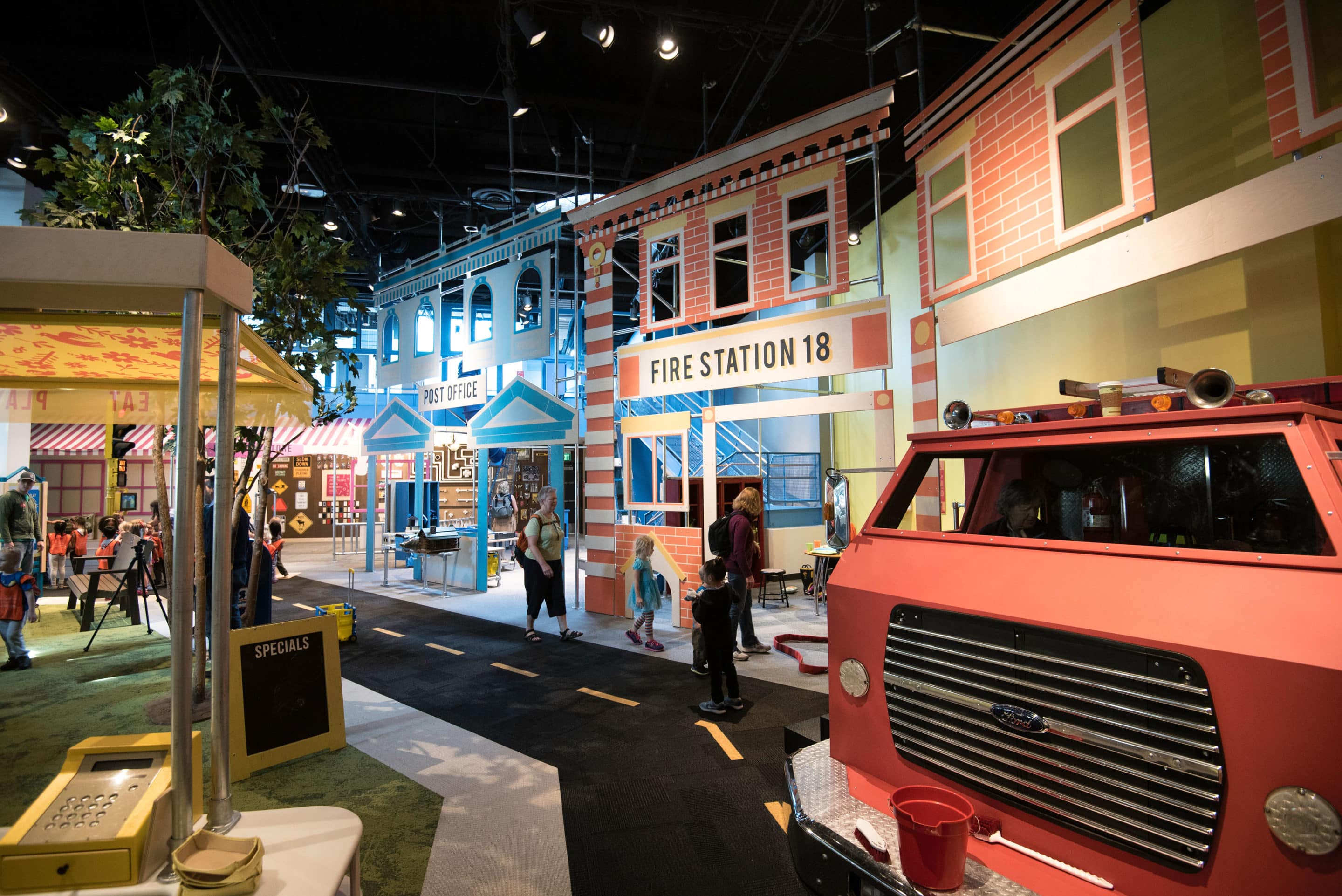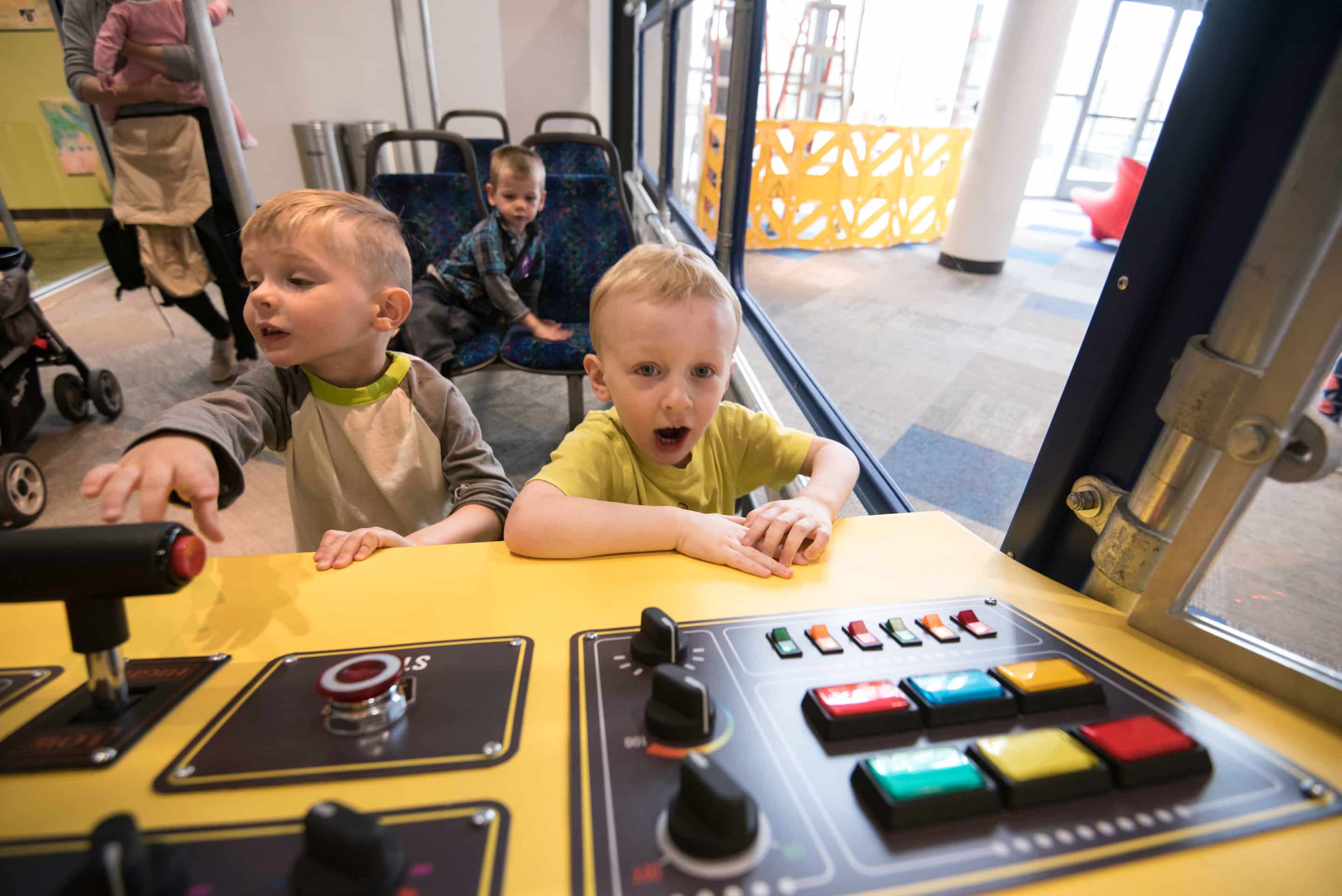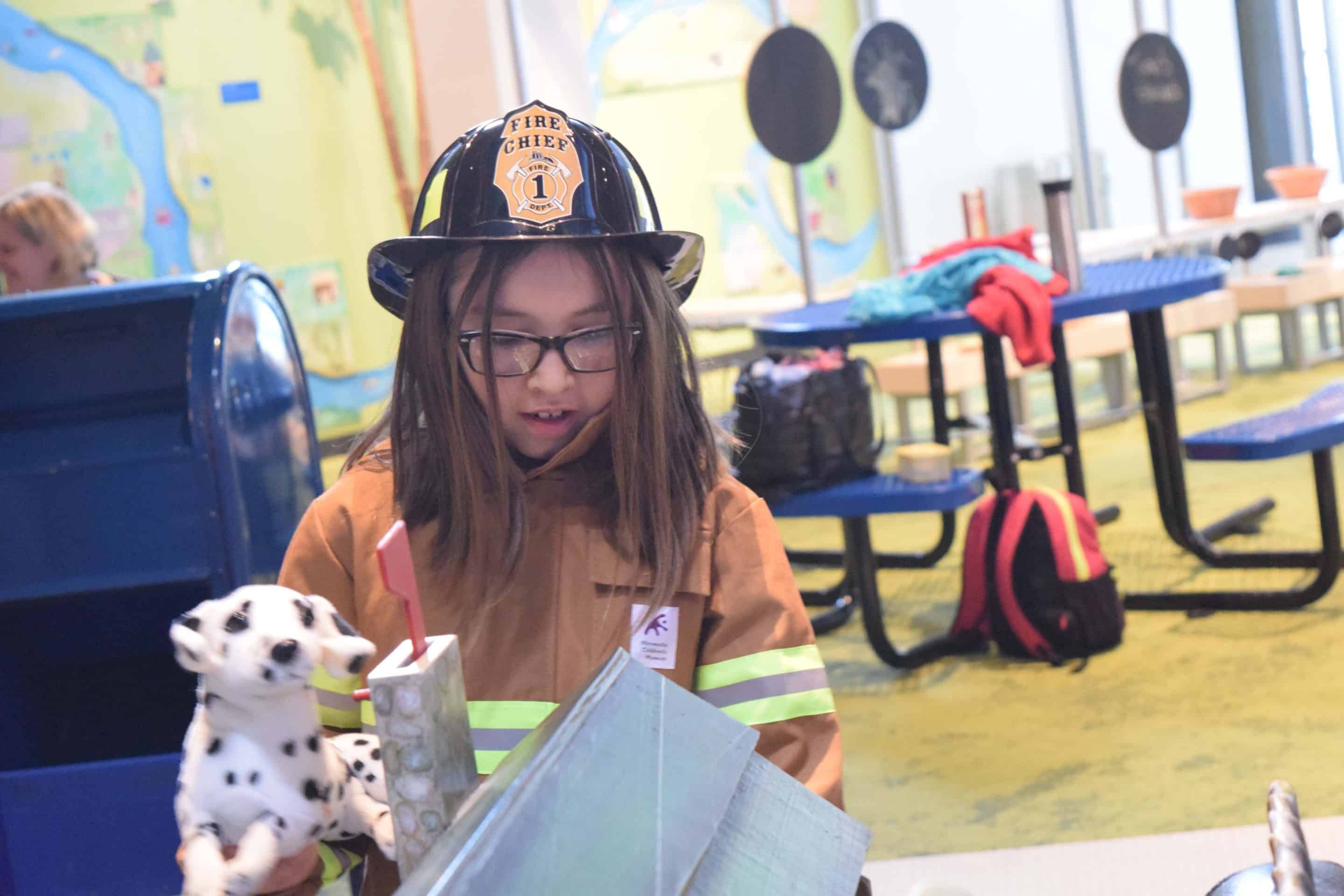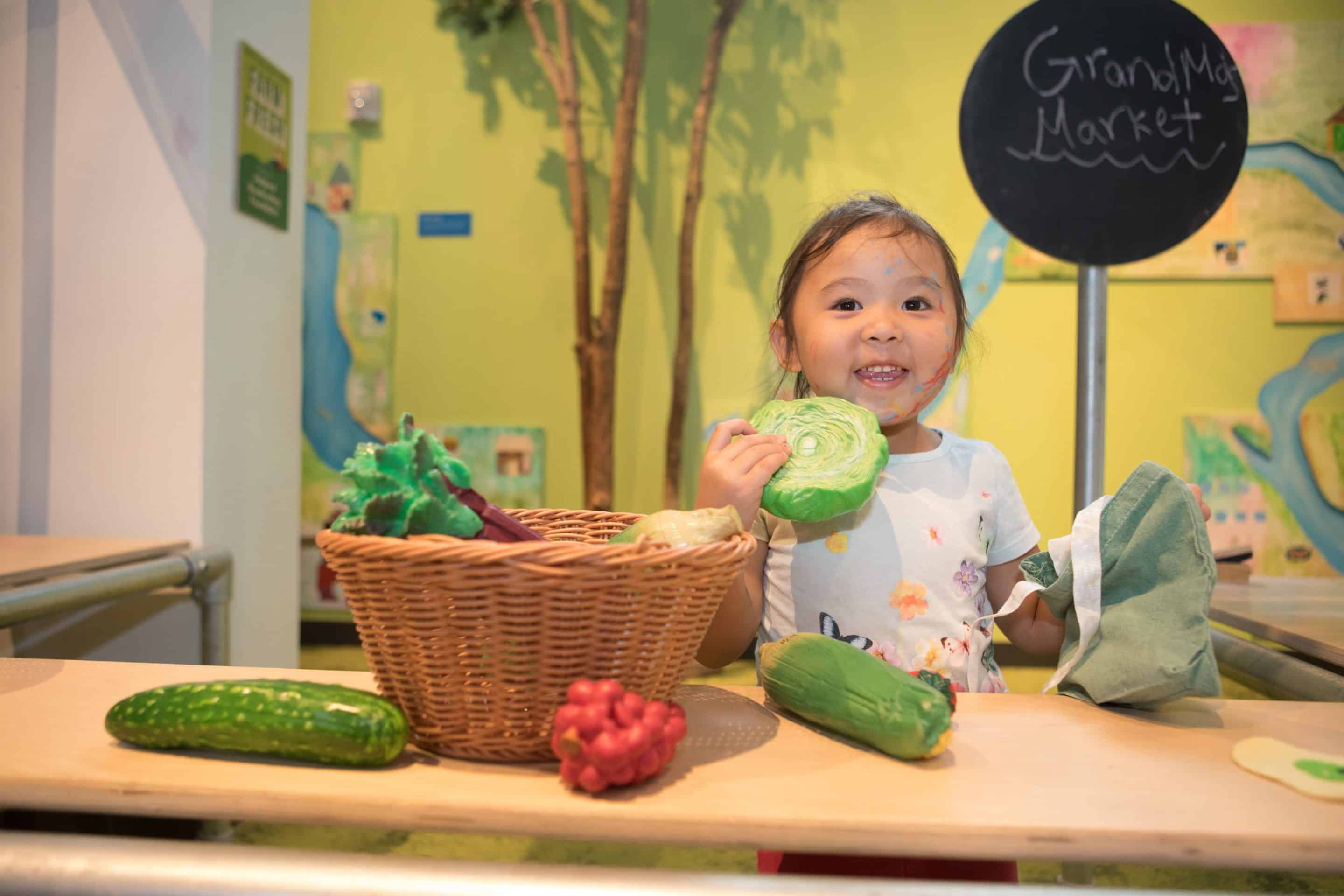DIMENSIONS OF PLAY
Play and Learn at the all new Minnesota Children’s Museum

Dawn LaBrosse, Youth Services Coordinator for Washington County Library
4 October 2017
Have you visited the all new Minnesota Children’s Museum yet? You will be AMAZED by all of the additional features and new exhibits.
The new museum includes 35% more space for visitors, twice as many bathrooms (thank you!), additional and larger elevators, a new café and coffee bar (must have coffee!), and 10 all new exhibits.
While all of the new amenities and exhibits are fun and engaging, one exhibit is near and dear to my heart: Our World. My kids and I loved the original Our World exhibit and this renovated version offers even more to love and appreciate.

The new Our World exhibit is designed to represent a vibrant Minnesota city with a fire station, post office, hardware store, food stand, and park. It allows visitors to step inside a familiar-feeling town and assume the different roles and responsibilities that are a part of making and keeping a healthy and vibrant community.
But what I love most about this exhibit are the endless opportunities for literacy and language development. As a Youth Services Librarian, I’m naturally passionate about books, reading, and early literacy development. I spend my days selecting books for children to fall in love with, planning educational programs for children to learn new things, presenting lively storytimes to get kids excited about reading, and empowering parents and caregivers to help their child get ready to read by singing, reading, writing, talking and PLAYING with them every day.
“Dramatic play helps children think symbolically: a stick becomes a sword or a magic wand or even a fire hose, a box becomes a car, a playmate becomes an astronaut exploring space.”
The different dramatic play centers in the Our World exhibit will spark conversations and role playing between the children and caregivers, all while building important language and symbolic thinking skills.
Dramatic play helps children think symbolically: a stick becomes a sword or a magic wand or even a fire hose, a box becomes a car, a playmate becomes an astronaut exploring space. When children are learning how to read they use this same symbolic thinking process; a child knows that the picture of an apple isn’t the real apple, just as they know the word “apple” isn’t the real apple. But they understand that they represent the real apple using symbolic thinking.

Dramatic play also helps develop narrative skills as children make up stories about what they’re doing. This helps them understand that stories happen in an order: first, next, last.
And play lends itself to so many opportunities to TALK! While playing, parents/caregivers are talking about what they are doing, describing the toys they are playing with, role playing different situations, and introducing new vocabulary.

Play is so much more than just having fun. Fred Rogers perhaps said it best when he remarked that:
“Play is often talked about as if it were a relief from serious learning. But for children play is serious learning. Play is really the work of childhood.”
Play on Minnesota!
Dawn LaBrosse is a Play Advocate for the Minnesota Children’s Museum, Youth Services Coordinator for Washington County Library, and mother of two play enthusiast kids (Benjamin, 6 and Annabelle, 4).



